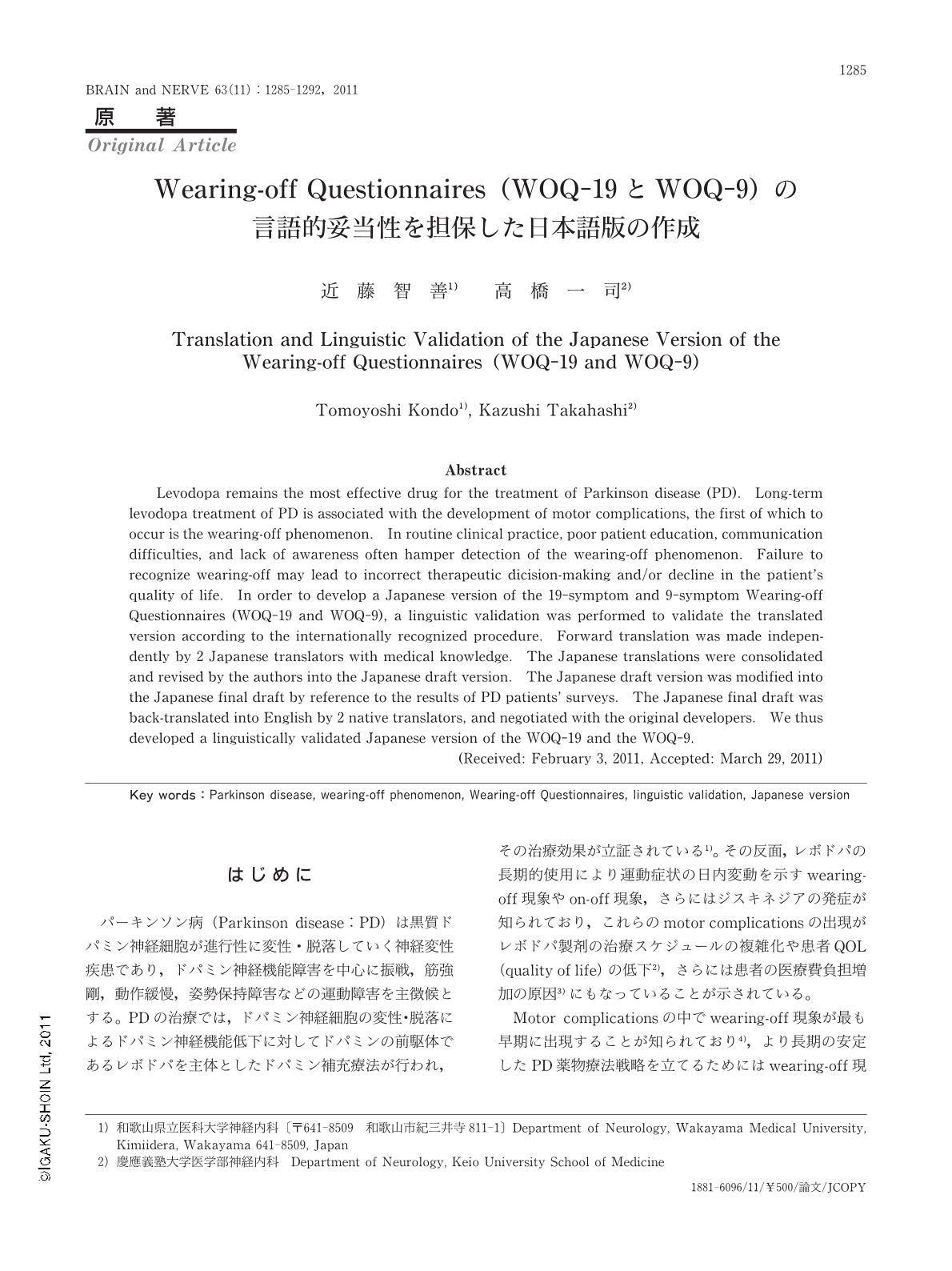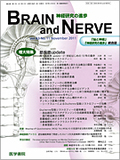Japanese
English
- 有料閲覧
- Abstract 文献概要
- 1ページ目 Look Inside
- 参考文献 Reference
はじめに
パーキンソン病(Parkinson disease:PD)は黒質ドパミン神経細胞が進行性に変性・脱落していく神経変性疾患であり,ドパミン神経機能障害を中心に振戦,筋強剛,動作緩慢,姿勢保持障害などの運動障害を主徴候とする。PDの治療では,ドパミン神経細胞の変性・脱落によるドパミン神経機能低下に対してドパミンの前駆体であるレボドパを主体としたドパミン補充療法が行われ,その治療効果が立証されている1)。その反面,レボドパの長期的使用により運動症状の日内変動を示すwearing-off現象やon-off現象,さらにはジスキネジアの発症が知られており,これらのmotor complicationsの出現がレボドパ製剤の治療スケジュールの複雑化や患者QOL(quality of life)の低下2),さらには患者の医療費負担増加の原因3)にもなっていることが示されている。
Motor complicationsの中でwearing-off現象が最も早期に出現することが知られており4),より長期の安定したPD薬物療法戦略を立てるためにはwearing-off現象を早期に,かつ的確に診断することが非常に重要である。しかし,wearing-off現象の診断では患者の訴えが極めて重要であり,問診時に患者が自身の症状を正しく医師に伝えることができないとwearing-off現象の出現を見逃してしまうリスクを伴う。このような背景から,wearing-off現象の出現を早期に発見することを目的とした自己記入方式によるwearing-off質問票(wearing-off questionnaires:WOQ)がStacyらによって近年開発され,質問が32項目からなるWOQ-32,19項目からなるWOQ-19(Appendix 1),および9項目からなるWOQ-9(Appendix 2)が順次作成されている5-7)。本邦では標準化されたWOQが存在せず,その開発と使用が望まれる。
そこで今回,WOQ-19とWOQ-9の言語的妥当性を担保した日本語版を作成し,その作成過程を記載した。
Abstract
Levodopa remains the most effective drug for the treatment of Parkinson disease (PD). Long-term levodopa treatment of PD is associated with the development of motor complications, the first of which to occur is the wearing-off phenomenon. In routine clinical practice, poor patient education, communication difficulties, and lack of awareness often hamper detection of the wearing-off phenomenon. Failure to recognize wearing-off may lead to incorrect therapeutic dicision-making and/or decline in the patient's quality of life. In order to develop a Japanese version of the 19-symptom and 9-symptom Wearing-off Questionnaires (WOQ-19 and WOQ-9), a linguistic validation was performed to validate the translated version according to the internationally recognized procedure. Forward translation was made independently by 2 Japanese translators with medical knowledge. The Japanese translations were consolidated and revised by the authors into the Japanese draft version. The Japanese draft version was modified into the Japanese final draft by reference to the results of PD patients' surveys. The Japanese final draft was back-translated into English by 2 native translators, and negotiated with the original developers. We thus developed a linguistically validated Japanese version of the WOQ-19 and the WOQ-9.
(Received: February 3,2011,Accepted: March 29,2011)

Copyright © 2011, Igaku-Shoin Ltd. All rights reserved.


